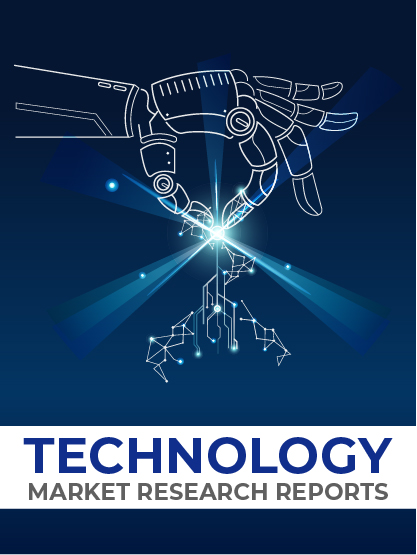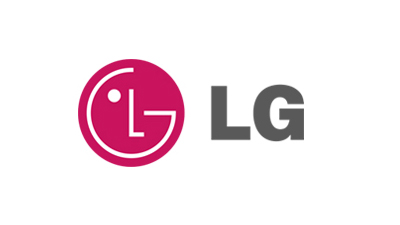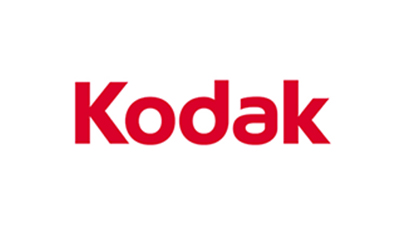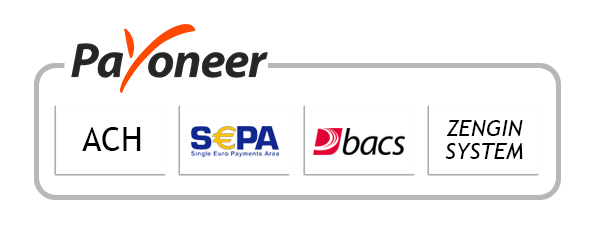
-
Report ID 138115 -
Published Date June 2023 -
Delivery Format PDF/PPT/Word -
Editor's Rating
-
Report Details
Report Overview
As the construction industry embraces artificial intelligence’s transformative potential, generative AI technologies are revolutionizing this sector by automating processes, supporting intelligent decision-making processes and increasing productivity and efficiency throughout the project lifespan. Generative AI is revolutionizing construction sectors worldwide!
The Generative AI in Construction Market Size accounted for USD 105 Mn in 2022 and is estimated to garner a market size of USD 1945 Mn by 2032 rising at a CAGR of 34.9% from 2023 to 2032. This growth is being driven by the increasing demand for more efficient and sustainable construction methods, as well as the growing availability of data and computing power.
Key Takeaways
- Generative AI is transforming the construction industry by automating and optimizing various processes.
- It facilitates data-driven design optimization, project planning, and construction process streamlining.
- Generative AI enhances productivity, efficiency, and decision-making throughout the project lifecycle.
- The generative AI in construction market is experiencing significant growth and is poised for further expansion.
- Collaboration between AI technology providers and construction firms is driving advancements in generative AI for construction.
Generative AI is set to play a larger role in transforming the construction industry by becoming an essential tool for design optimization, construction process automation, and data-driven decision-making. It will empower construction professionals to leverage AI technologies to enhance project outcomes, improve sustainability, and accelerate construction timelines. Generative AI will enable the construction sector to meet evolving demands for efficient and innovative building solutions.
Generative AI has many uses in the construction industry, including
- Design Optimization: Generative AI can be leveraged to optimize the design of buildings and infrastructure by eliminating inefficiency, which could result in cost savings as well as enhanced performance. This could potentially bring significant cost reduction and enhanced functionality.
- Construction Planning and Scheduling: Generative AI can be leveraged to more efficiently plan and schedule construction projects by taking into account factors like site conditions, project requirements and available resources – which in turn leads to reduced project timelines and costs.
- Material Procurement: Generative AI can be utilized to efficiently procure materials for construction projects by locating the most cost-effective suppliers and assuring timely deliveries – ultimately leading to reduced expenses and enhanced project efficiencies.
- Safety: Generative AI can be utilized to increase site safety on construction sites by identifying potential risks and formulating mitigation plans to alleviate them. This may help avoid accidents or injuries on-site.
Upcoming Trends in Generative AI market in Construction
- The increasing adoption of Building Information Modeling (BIM): BIM is a digital representation of a building that can be used to plan, design, and construct buildings more efficiently. Generative AI can be used to improve the accuracy and efficiency of BIM models.
- The development of new generative AI technologies: The development of new generative AI technologies is creating new opportunities for the market. For example, the development of generative adversarial networks (GANs) is enabling the creation of more realistic and accurate 3D models of buildings.
- The expansion of the global construction market: The global construction market is expanding, and this is creating new opportunities for generative AI solutions in emerging markets.
Market Dynamics
Drivers
The following are some of the drivers of the generative AI market in construction:
- Increasing demand for more efficient and sustainable construction methods: The construction industry is under pressure to become more efficient and sustainable. Generative AI can help to achieve this by optimizing the design, planning, and execution of construction projects.
- Growing availability of data and computing power: The increasing availability of data and computing power is enabling the development of more sophisticated generative AI models. This is driving the growth of the market.
- Government policies and regulations: Governments around the world are introducing policies and regulations that promote the use of sustainable construction methods. This is creating demand for generative AI solutions that can help to achieve these goals.
Restraints
The following are some of the restraints of the generative AI market in construction:
- High cost of implementation: Generative AI solutions can be expensive to implement. This is a barrier to entry for some businesses.
- Lack of skilled labor: There is a shortage of skilled labor in the construction industry. This can make it difficult to implement generative AI solutions.
- Data privacy and security concerns: There are concerns about the privacy and security of data used in generative AI models. This could slow the adoption of generative AI solutions in the construction industry.
Opportunities
The following are some of the opportunities in the generative AI market in construction:
- The growth of the green building market: The green building market is growing rapidly, and this is creating opportunities for generative AI solutions that can help to improve the sustainability of buildings.
- The development of new generative AI technologies: The development of new generative AI technologies is creating new opportunities for the market. For example, the development of generative adversarial networks (GANs) is enabling the creation of more realistic and accurate 3D models of buildings.
- The expansion of the global construction market: The global construction market is expanding, and this is creating new opportunities for generative AI solutions in emerging markets.
Challenges
The following are some of the challenges in the generative AI market in construction:
- The lack of standardization: There is a lack of standardization in the generative AI market in construction. This can make it difficult for businesses to implement and use generative AI solutions.
- The need for more training data: Generative AI models require large amounts of training data. This can be a challenge for businesses that do not have access to large datasets.
- The need for more skilled labor: There is a shortage of skilled labor in the generative AI market in construction. This can make it difficult to implement and use generative AI solutions.
Top Key Players in Generative AI in Construction Market
- Autodesk Inc.
- Dassault Systemes
- Trimble
- Bentley Systems
- Katerra
- Oracle Corporation
- Aurora Computer Services
- Building System Planning Inc.
- IBM Corporation
- Microsoft Corporation
- Other Market Players
Recent Development
2022- Autodesk released a new generative design tool called Generative Design for Revit. This tool allows architects and engineers to create 3D models of buildings that are optimized for performance and sustainability.
- Google Cloud launched a new generative AI service called Cloud TPU Pods. This service provides businesses with access to high-performance TPUs, which can be used to train and deploy generative AI models.
- The construction industry is increasingly adopting Building Information Modeling (BIM) technology. BIM is a digital representation of a building that can be used to plan, design, and construct buildings more efficiently. Generative AI can be used to improve the accuracy and efficiency of BIM models.
2023
- Generative AI start-up Briq raised $10 million in Series A funding. Briq’s platform uses generative AI to help construction companies automate workflows and stop fee erosion.
- The construction industry is increasingly adopting drones and other autonomous technologies. Generative AI can be used to improve the accuracy and efficiency of these technologies.
- The European Union announced plans to invest $1.2 billion in generative AI research and development. This investment is expected to accelerate the development of generative AI solutions for the construction industry.
Largest and Fastest Growing Market
Currently, North America is the largest market for generative AI in construction, driven by the adoption of advanced technologies and the presence of major construction firms. However, the Asia Pacific region, particularly countries like China, India, and Japan, is experiencing the fastest growth due to rapid urbanization, infrastructure development, and government initiatives to modernize the construction sector.
Market Segments
Based on Type
- Residential Construction
- Commercial Construction
- Industrial Construction
- Infrastructure Construction
- Other Types
Based on Technology
- Machine Learning
- Natural Language Processing
- Other Technologies
Based on Application
- Design and Planning
- Construction Optimization
- Project Management
- Other Applications
Key Regions and Countries
North America
- US
- Canada
- Mexico
Western Europe
- Germany
- France
- The UK
- Spain
- Italy
- Portugal
- Ireland
- Austria
- Switzerland
- Benelux
- Nordic
- Rest of Western Europe
Eastern Europe
- Russia
- Poland
- The Czech Republic
- Greece
- Rest of Eastern Europe
APAC
- China
- Japan
- South Korea
- India
- Australia & New Zealand
- Indonesia
- Malaysia
- Philippines
- Singapore
- Thailand
- Vietnam
- Rest of APAC
Latin America
- Brazil
- Colombia
- Chile
- Argentina
- Costa Rica
- Rest of Latin America
Middle East & Africa
- Algeria
- Egypt
- Israel
- Kuwait
- Nigeria
- Saudi Arabia
- South Africa
- Turkey
- United Arab Emirates
- Rest of MEA
5 Predictions about the Future:
- Generative AI will become a standard tool in the construction industry, revolutionizing design optimization and project planning.
- AI-powered construction systems will enable real-time data analysis and decision-making for enhanced productivity and risk mitigation.
- Digital twins and AI-driven simulations will facilitate accurate project forecasting and improve construction project management.
- Generative AI will drive advancements in off-site construction and prefabrication, enhancing efficiency and sustainability.
- Integration of generative AI with robotics and automation will pave the way for autonomous construction processes and improved safety measures
FAQs1. What is generative AI in construction and how does it impact the industry?
Generative AI in construction refers to the use of artificial intelligence algorithms to automate and optimize various processes in the construction sector. It impacts the industry by improving design optimization, streamlining project planning, enhancing productivity, and enabling data-driven decision-making. Generative AI empowers construction professionals to leverage AI technologies for efficient and innovative building solutions.
2. What are the key drivers fueling the growth of generative AI in construction market?
The growth of generative AI in construction is driven by increasing demand for sustainable buildings, the complexity of construction projects, advancements in AI algorithms and big data analytics, cost and time savings achieved through automation, and the rising adoption of digital technologies and Building Information Modeling (BIM) in the construction industry.
3. What are the challenges and restraints associated with adopting generative AI in construction?
The challenges and restraints of adopting generative AI in construction include limited awareness and understanding of generative AI among construction professionals, integration challenges with existing construction software and workflows, concerns regarding data privacy and security, initial investment costs, and resistance to change within the construction industry.
4. How can generative AI be integrated with existing construction software and workflows?
Generative AI can be integrated with existing construction software and workflows by leveraging application programming interfaces (APIs) and interoperability standards. Construction software providers can develop interfaces or plugins that allow seamless integration of generative AI algorithms into their existing platforms. Collaborations between AI technology providers and construction firms can also help tailor generative AI solutions to fit specific project requirements.
5. What opportunities does generative AI present for sustainable building design and construction processes?
Generative AI presents opportunities for sustainable building design and construction processes by optimizing energy-efficient building layouts, simulating and analyzing environmental impacts, generating sustainable material recommendations, and facilitating predictive maintenance and asset management. It enables construction professionals to create environmentally friendly and energy-efficient buildings while minimizing waste and resource consumption.
6. Which regions are the largest and fastest-growing markets for generative AI in construction?
Currently, North America is the largest market for generative AI in construction, driven by the adoption of advanced technologies and the presence of major construction firms. However, the Asia Pacific region, particularly countries like China, India, and Japan, is experiencing the fastest growth due to rapid urbanization, infrastructure development, and government initiatives to modernize the construction sector.
7. How does generative AI play a larger role in transforming the construction industry?
Generative AI plays a larger role in transforming the construction industry by becoming an essential tool for design optimization, construction process automation, and data-driven decision-making. It empowers construction professionals to leverage AI technologies for enhanced project outcomes, improved sustainability, and accelerated construction timelines.
8. What are the predictions for the future of generative AI in construction?
Predictions for the future of generative AI in construction include the widespread adoption of AI as a standard tool in the industry, advancements in real-time data analysis and decision-making, integration of generative AI with robotics and automation for autonomous construction processes, and increased utilization of generative AI in off-site construction and prefabrication.
-
Table Of Content
Research Insights & Deliverables
 Development and Future Forecast
Development and Future Forecast Competitive benchmarking
Competitive benchmarking Company Revenue Statistics
Company Revenue Statistics Rising Regional Opportunities
Rising Regional Opportunities Technology Trends and Dynamics
Technology Trends and Dynamics Technology Assessment
Technology Assessment
-
Inquiry Before Buying
Research Insights & Deliverables
 Development and Future Forecast
Development and Future Forecast Competitive benchmarking
Competitive benchmarking Company Revenue Statistics
Company Revenue Statistics Rising Regional Opportunities
Rising Regional Opportunities Technology Trends and Dynamics
Technology Trends and Dynamics Technology Assessment
Technology Assessment
-
Request Sample
Research Insights & Deliverables
 Development and Future Forecast
Development and Future Forecast Competitive benchmarking
Competitive benchmarking Company Revenue Statistics
Company Revenue Statistics Rising Regional Opportunities
Rising Regional Opportunities Technology Trends and Dynamics
Technology Trends and Dynamics Technology Assessment
Technology Assessment














